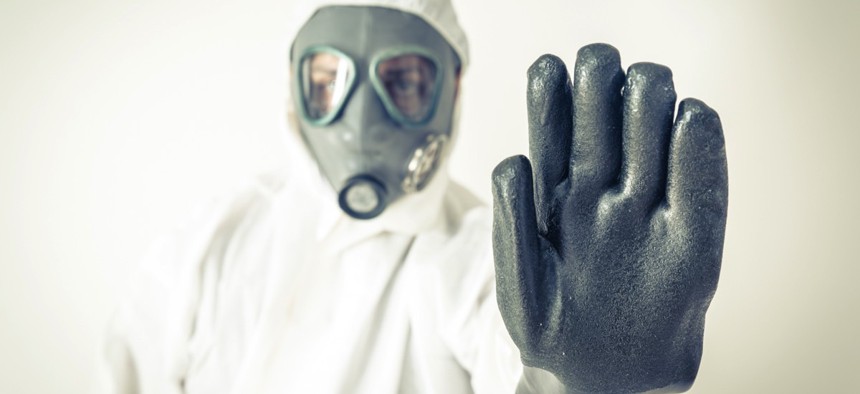California Porn Stars Need to Wear Goggles? A Doctor Dispels a Regulatory Myth

Shutterstock.com
Professional opinions in the Golden State are combating misinformation about proposed changes to the labor code.
Sometimes, policymakers have to call in the experts to explain state regulations. And that’s been the case in California recently.
With some individuals in the pornography industry spreading misinformation claiming that proposed updated regulations for sexually transmitted diseases in the workplace will soon have porn stars sporting goggles—reported by several news outlets—one doctor, Jeffrey Klausner, has issued a statement defending the proposal.
The University of California, Los Angeles professor of medicine and health, specializing in STD prevention, argues the state’s Division of Occupational Safety and Health (Cal/OSHA) board would actually be removing the word “goggles” from Section 5193 of the state’s labor code to narrow its bloodborne pathogens standard.
According to Klausner:
Proposed Section 5193.1 is not about efforts to eliminate the adult film industry through the implementation of impossible regulations. It is about creating reasonable standards to protect workers in an industry that seriously violates safety and health regulations. There is nothing new in the proposed language that wasn't previously included in the existing and longstanding regulations other than the word ‘condoms.’
The update adds condoms as an approved protective option for pornography actors, who were already required to use some sort of barrier while filming in California. That law went flagrantly unenforced until Los Angeles County began requiring condoms on adult film sets in 2012—decreasing local porn production by more than 90 percent, The Washington Post reported.
Adult filmmakers began protesting that Cal/OSHA’s requirements were too broad, with goggles listed as a type of “personal protective equipment” under the current standard because the labor code covers all types of industry workers.
“These are regulations designed for medical settings, and are unworkable on an adult film set—or even a Hollywood film set,” Free Speech Coalition CEO Diane Duke said in a statement.
That’s likely because AIDS Healthcare Foundation President Michael Weinsten, whose organization pushed L.A. County’s condom law, requested them five years ago, frustrated with the porn industry’s poor testing and safe-sex track records.
AHF, which distributed Klausner’s message, says at least four adult film stars were infected with HIV since December 2009 while working in California’s pornography industry, while FSC holds that number is zero on regulated sets since 2004, according to the Post.
“We're absolutely opposed to the new regulations proposed by Cal/OSHA,” Kink.com spokesman Michael Stabile told SF Weekly. “They're based in stigma and threaten to make working conditions less safe for adult performers.”
While not opposed to regulations, Stabile said Kink.com wouldn’t support ones that asserted control over performers’ bodies or mandate disclosure of medical information.
Kink.com was part of a coalition that presented revisions to Section 5193.1 at a May 21 Cal/OSHA board hearing.
As for the goggles, Klausener has more bad news for porn purists:
Case reports and research studies have documented ocular and oral STDs, including gonorrhea and chlamydia, as a result of bodily fluid exposure. This is why Cal/OSHA requires adult film performers to avoid ejaculation in the eyes and mouth. Luckily, there are many ways to reduce STD exposures without the use of goggles, such as avoiding direct exposure to the eyes and mouth or using imitation ejaculate such as methyl cellulose. Both methods are commonly utilized in adult films.
NEXT STORY: Remaking Rochester, Minnesota in the Mayo Clinic’s Image






